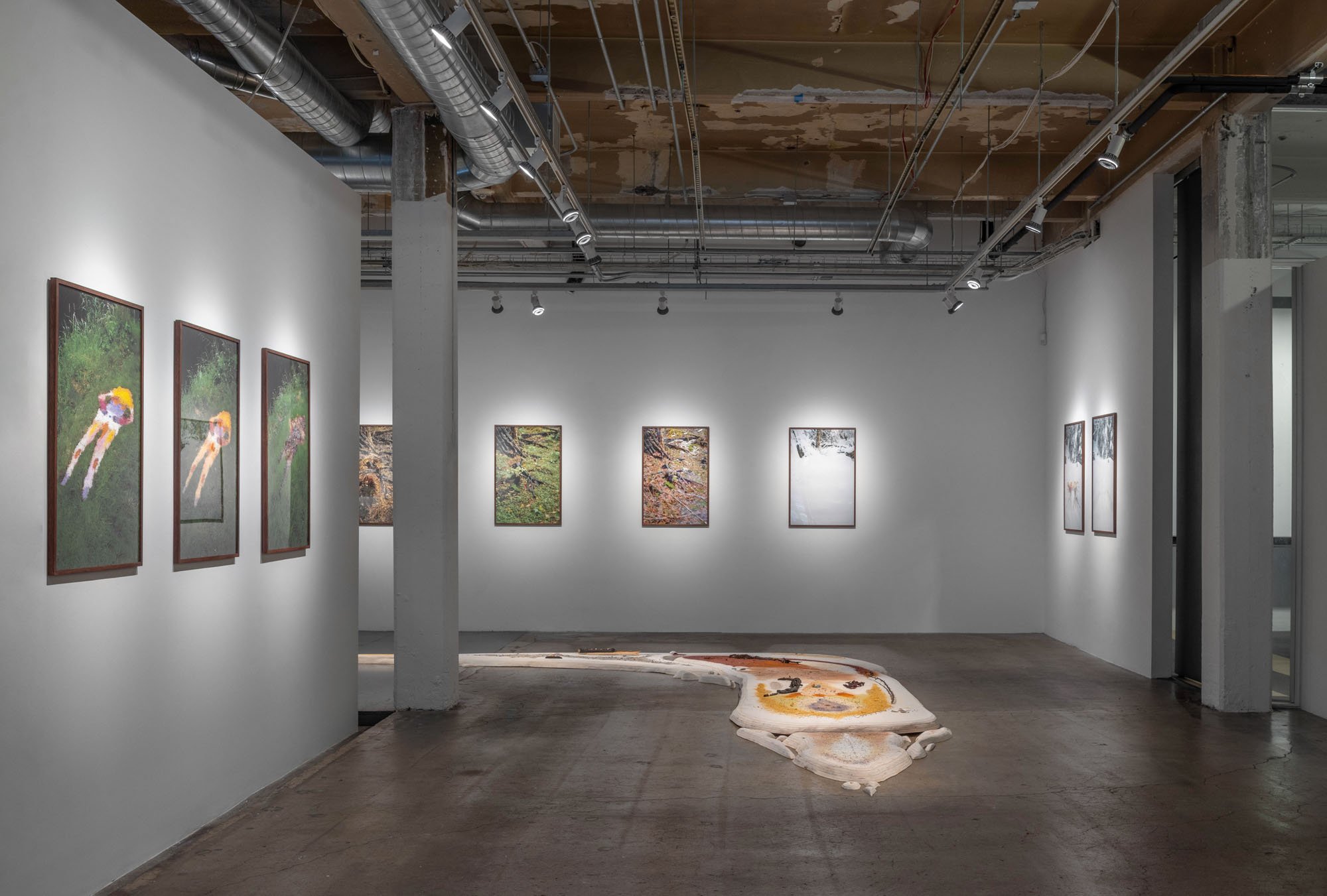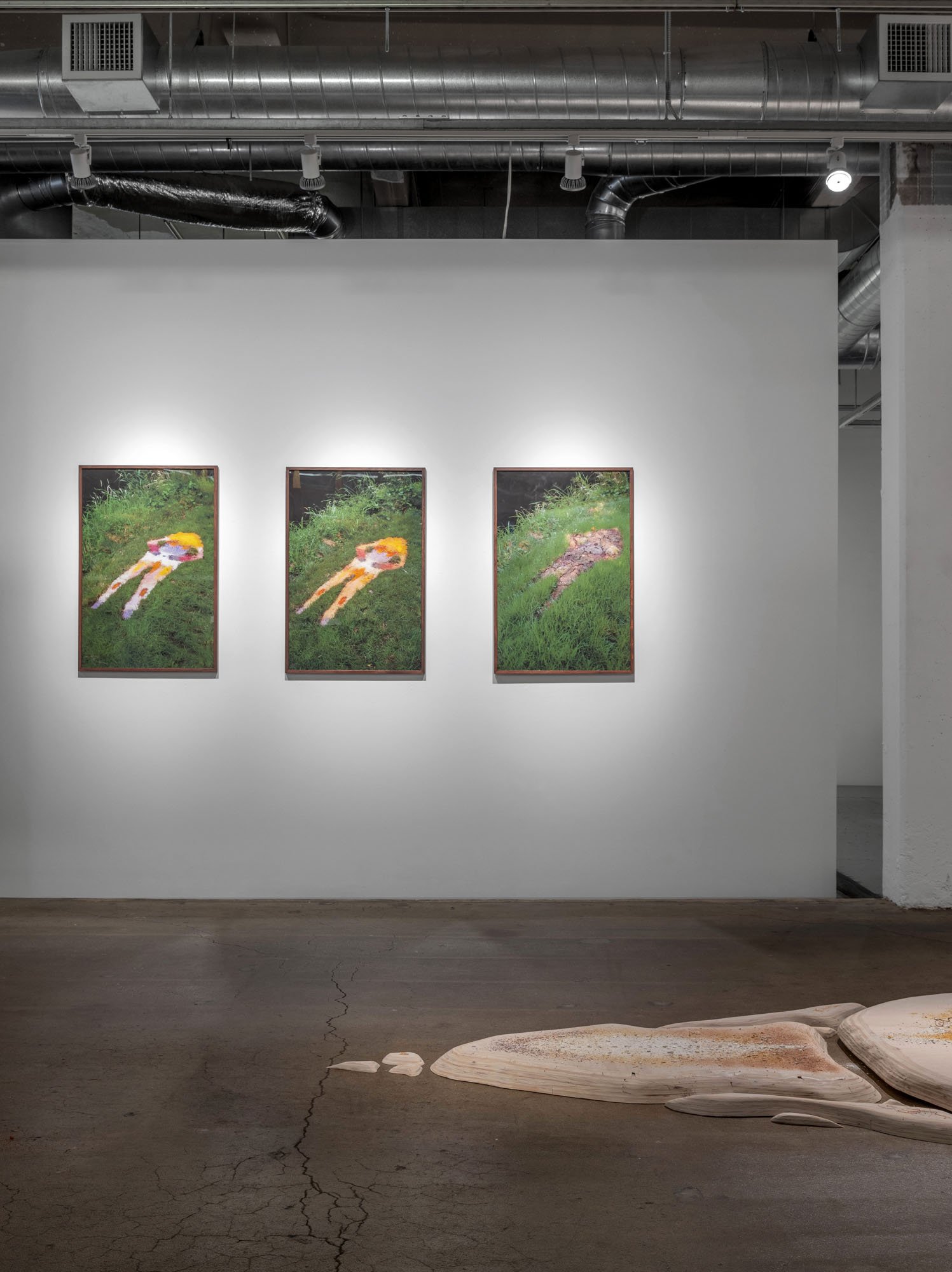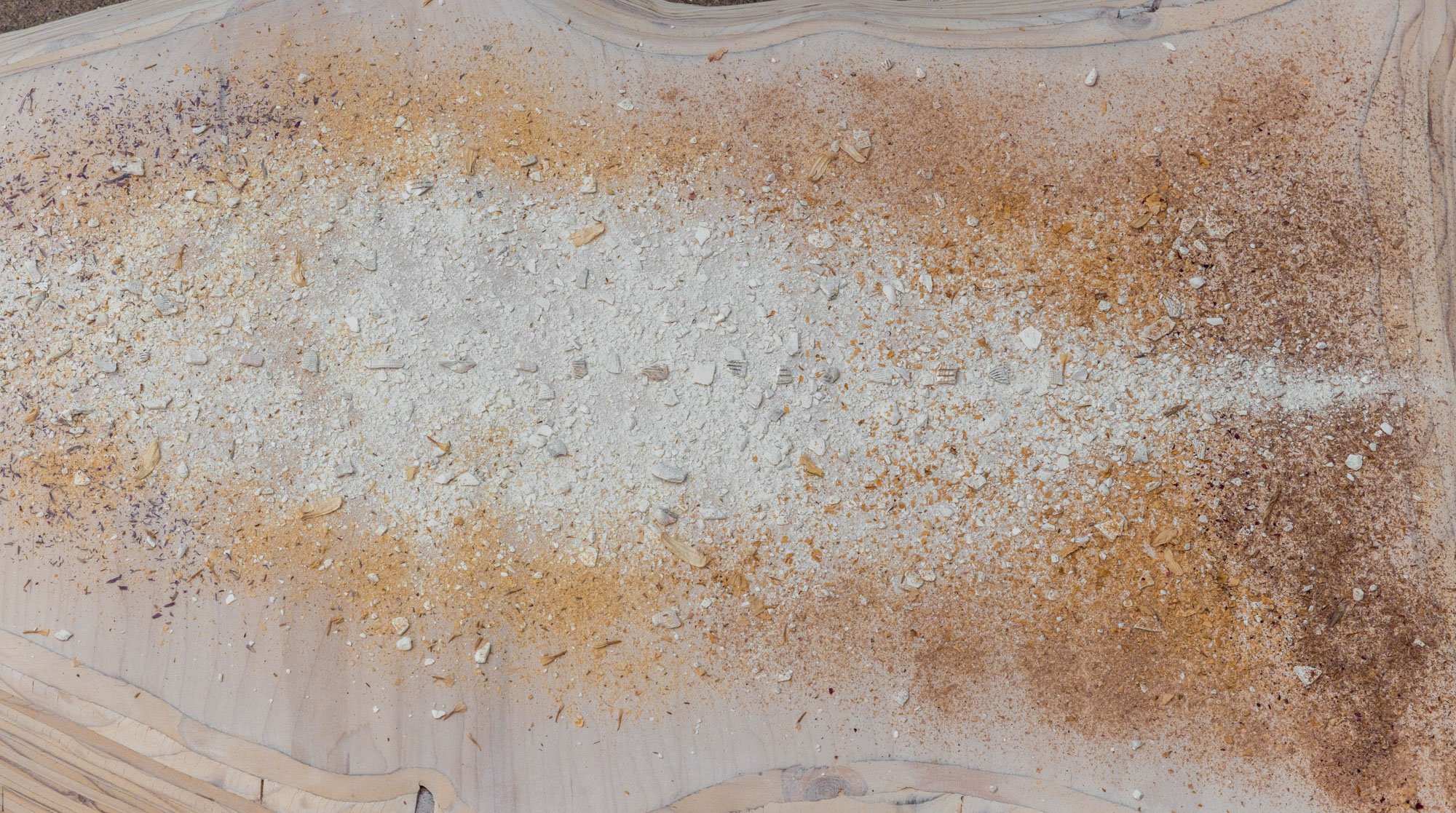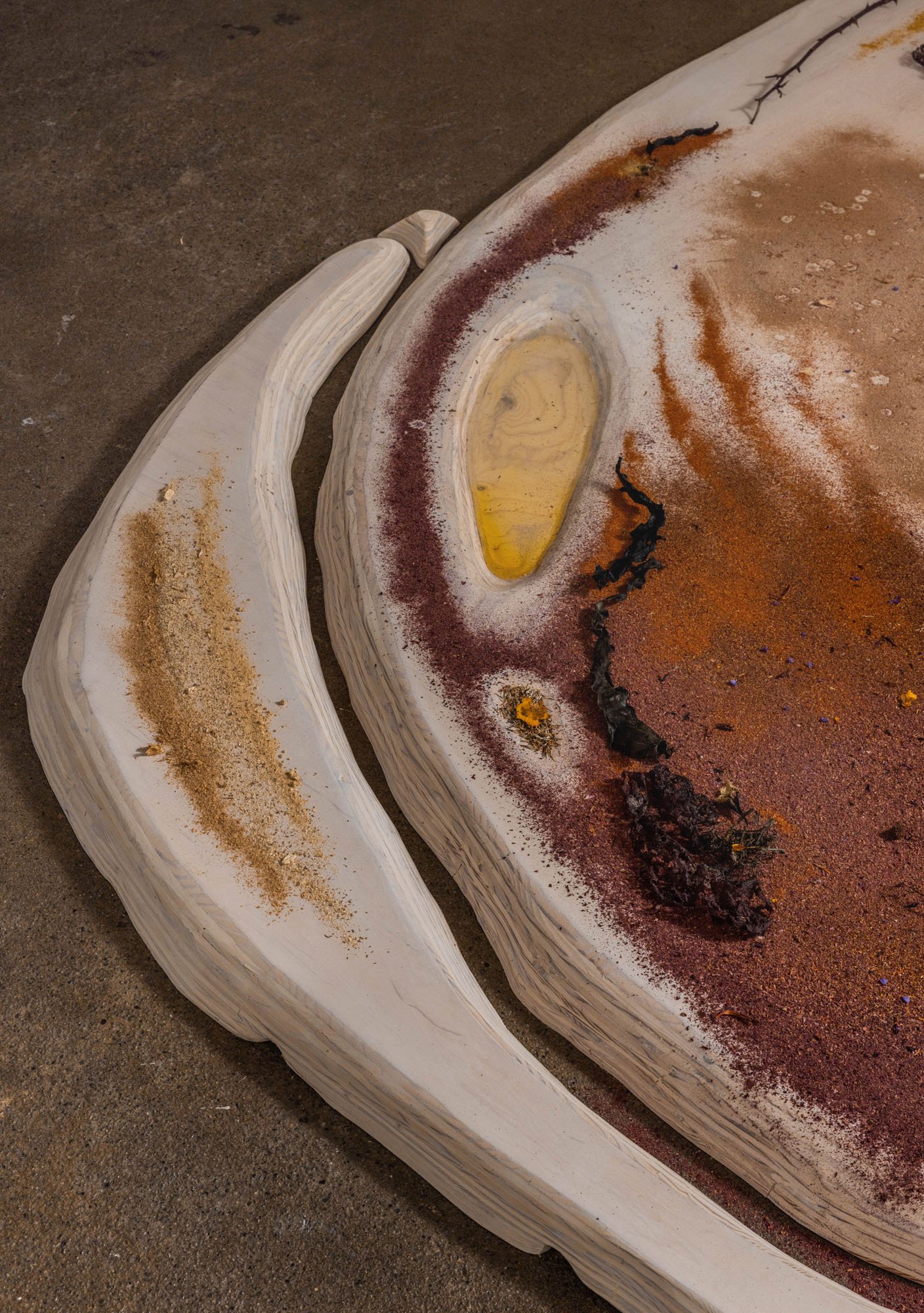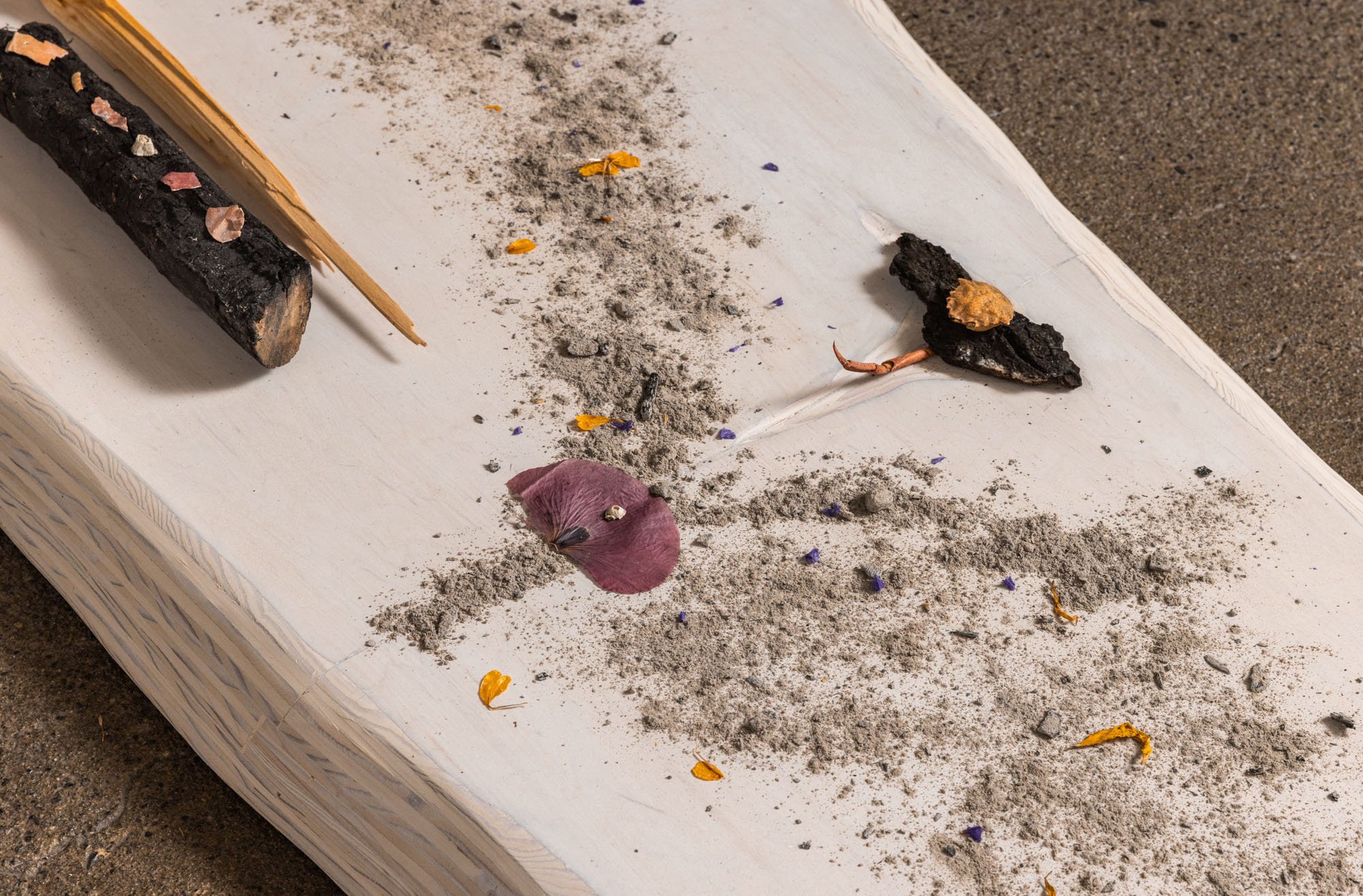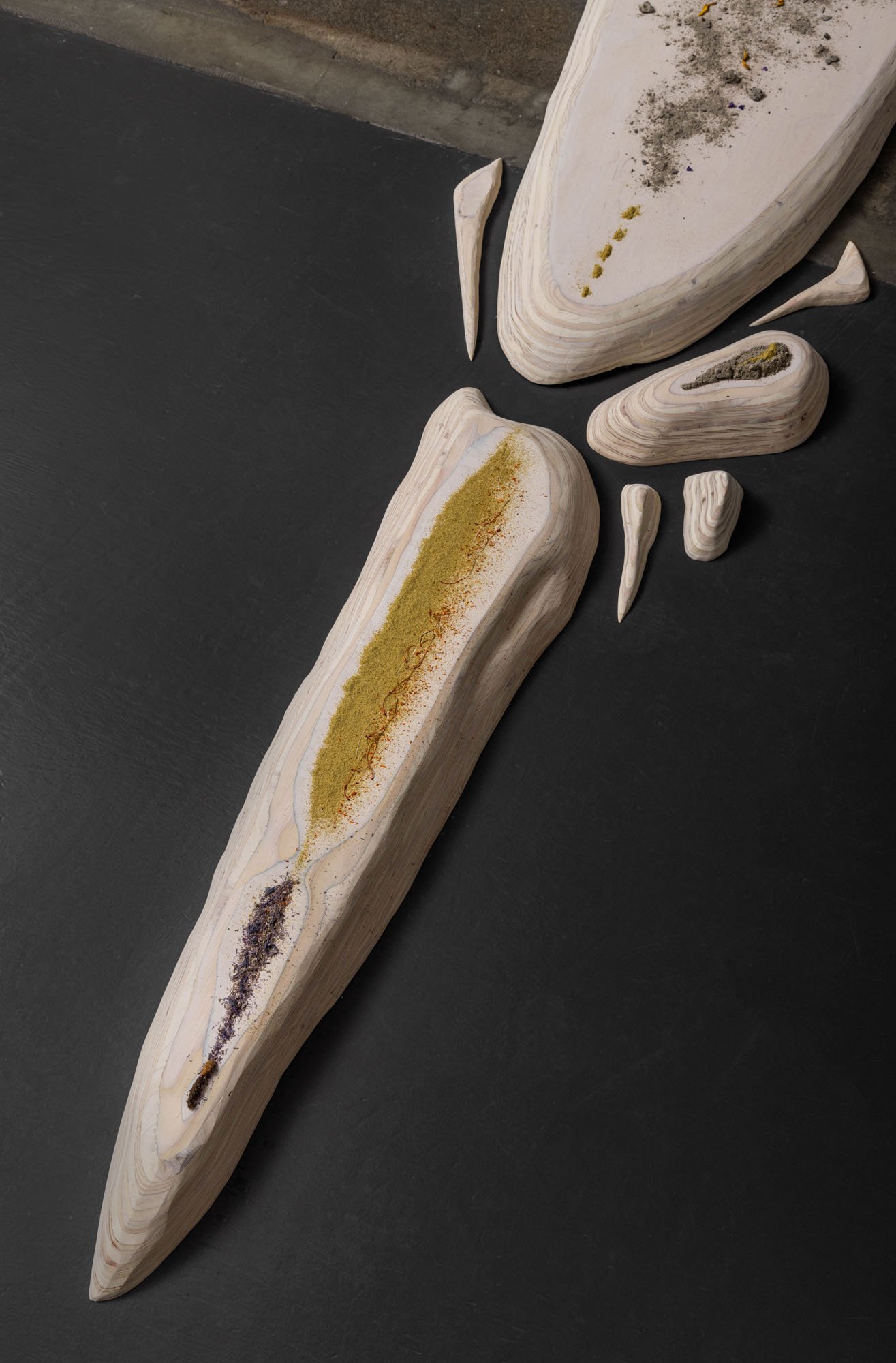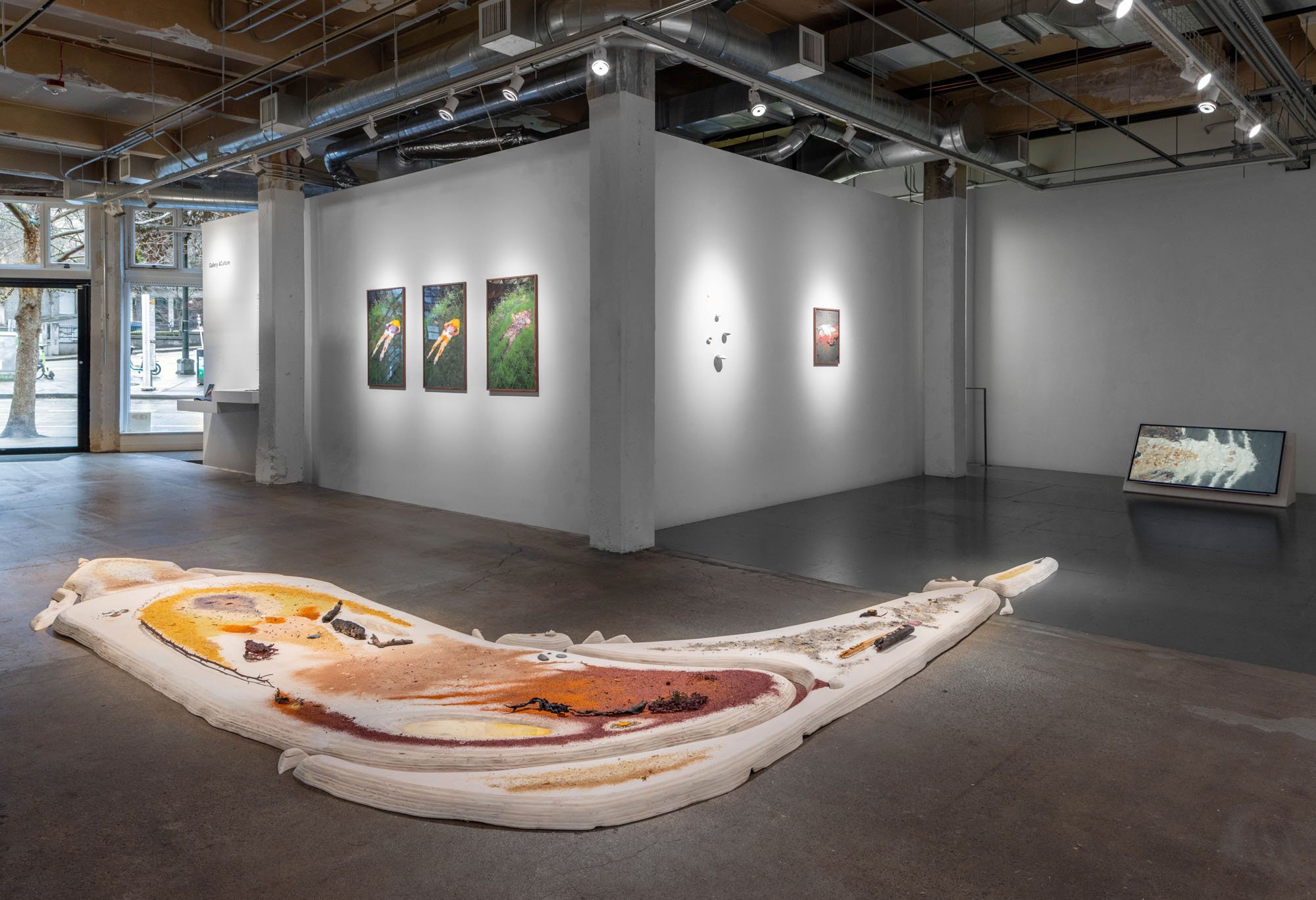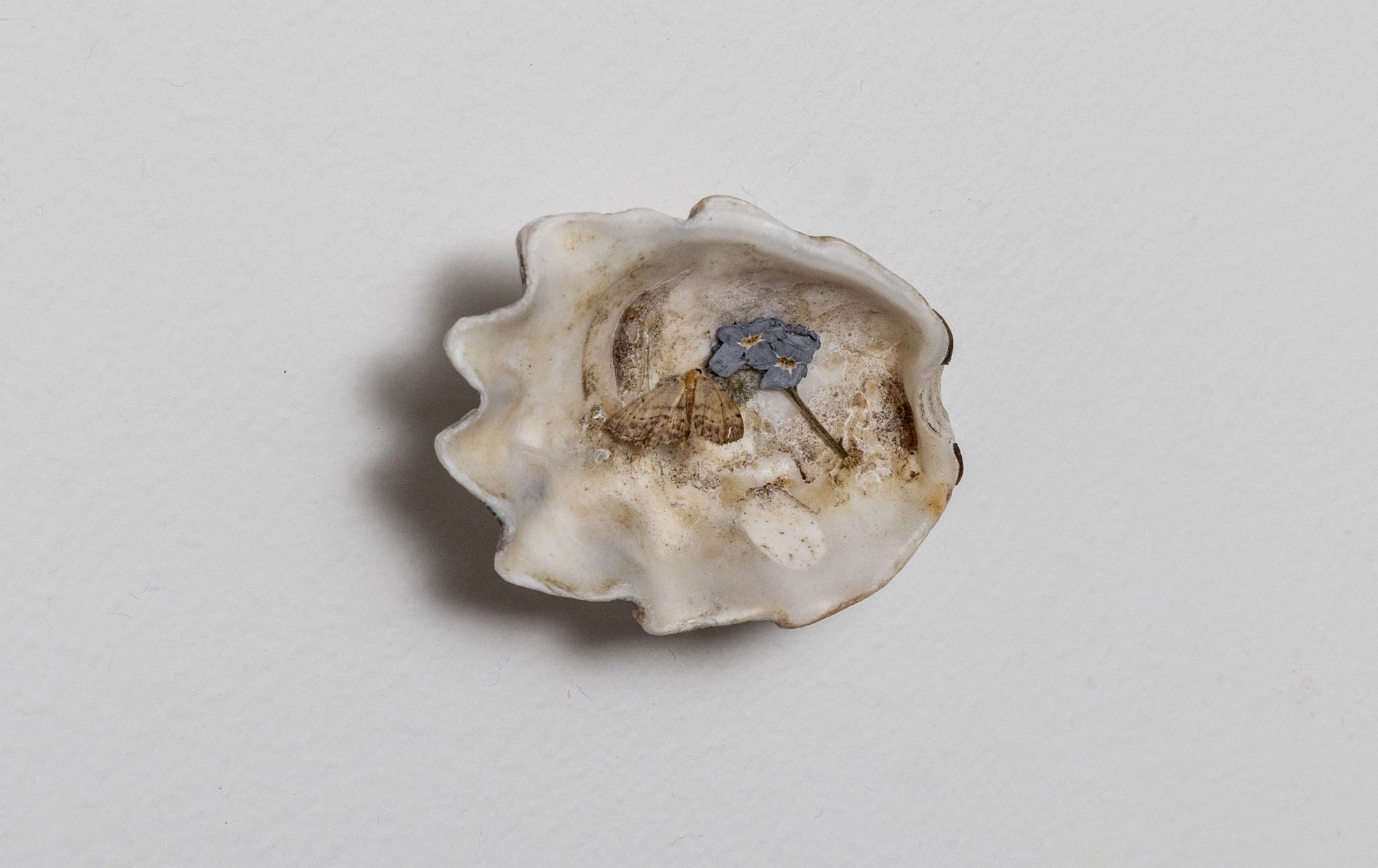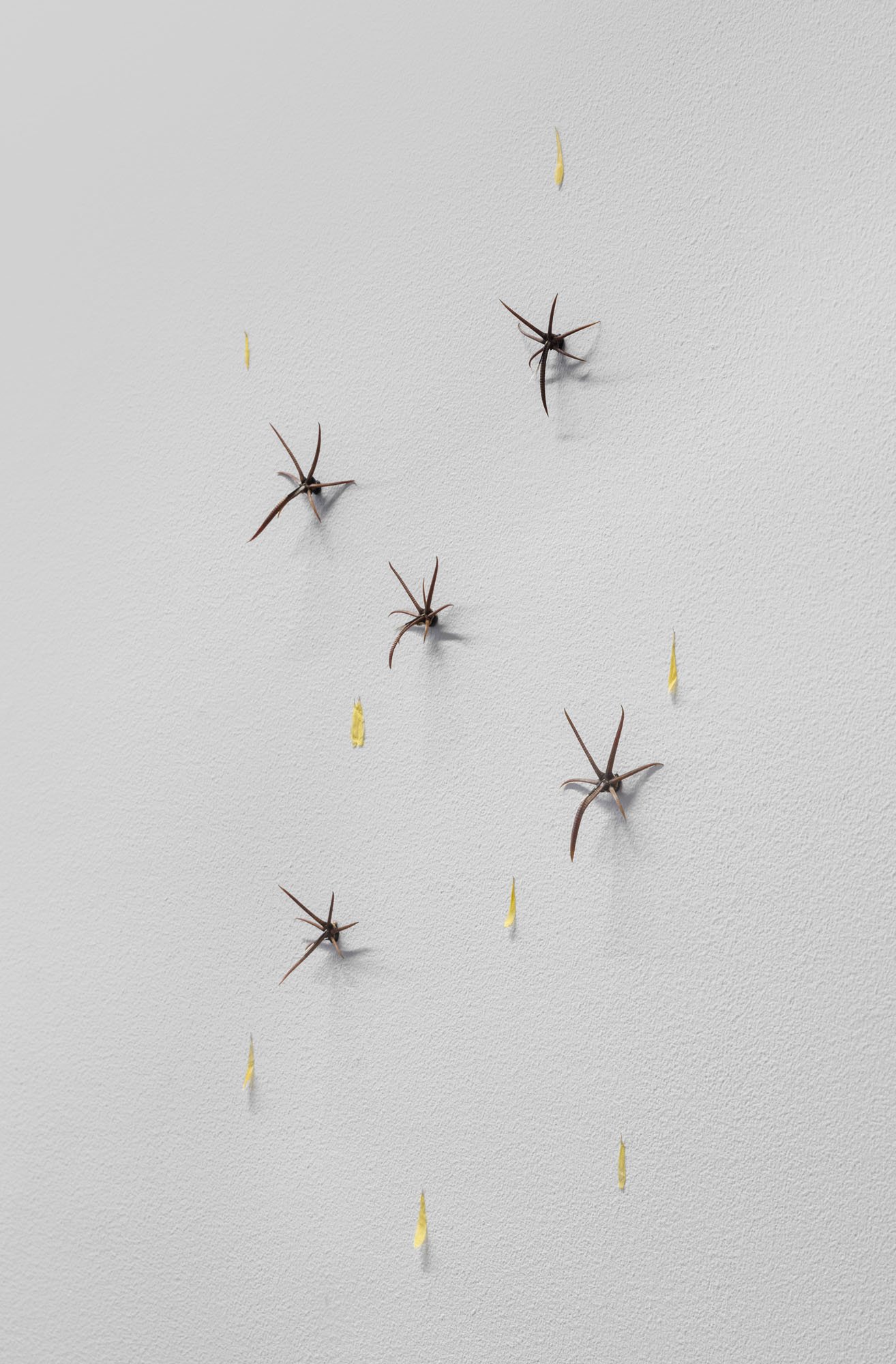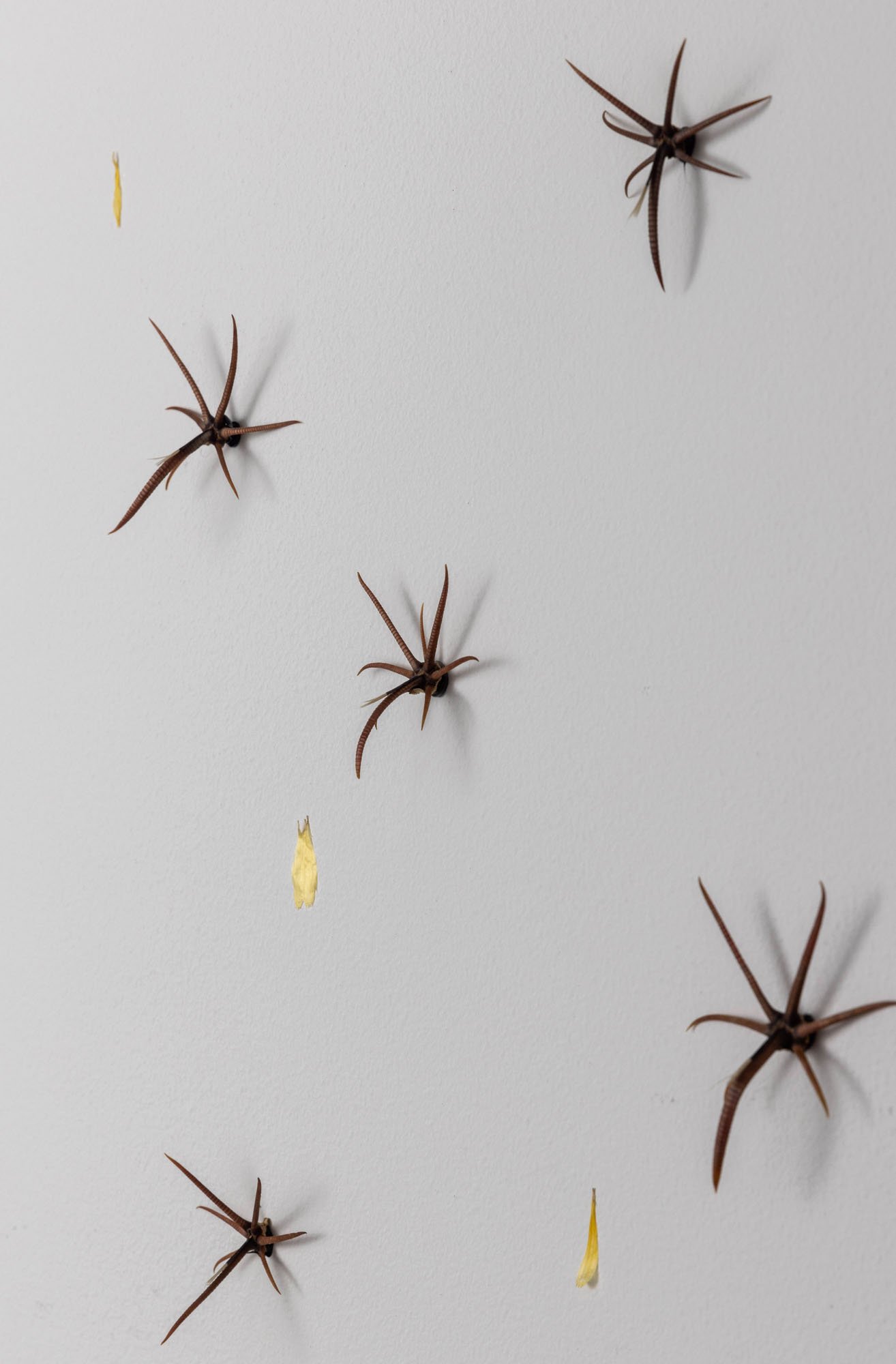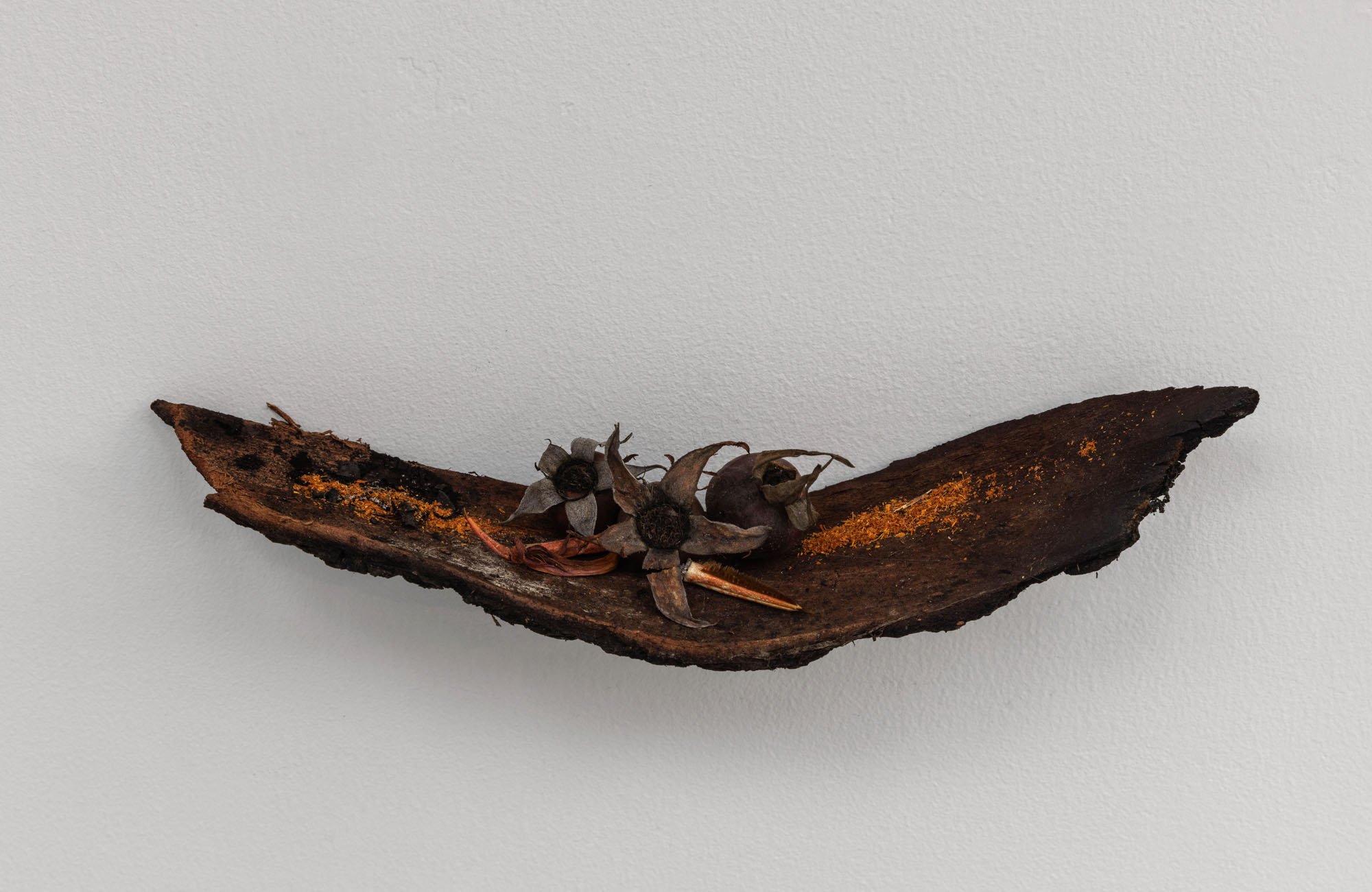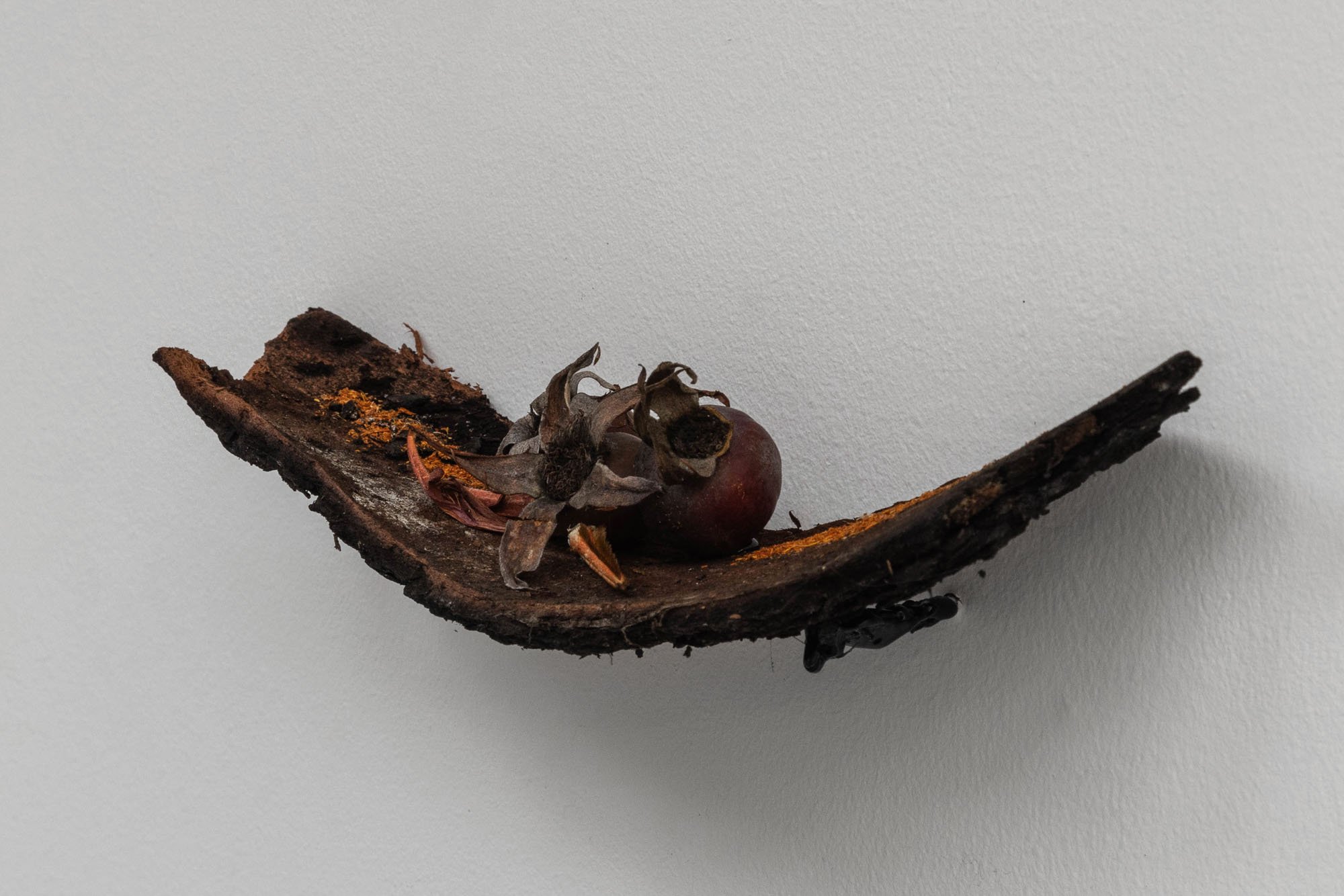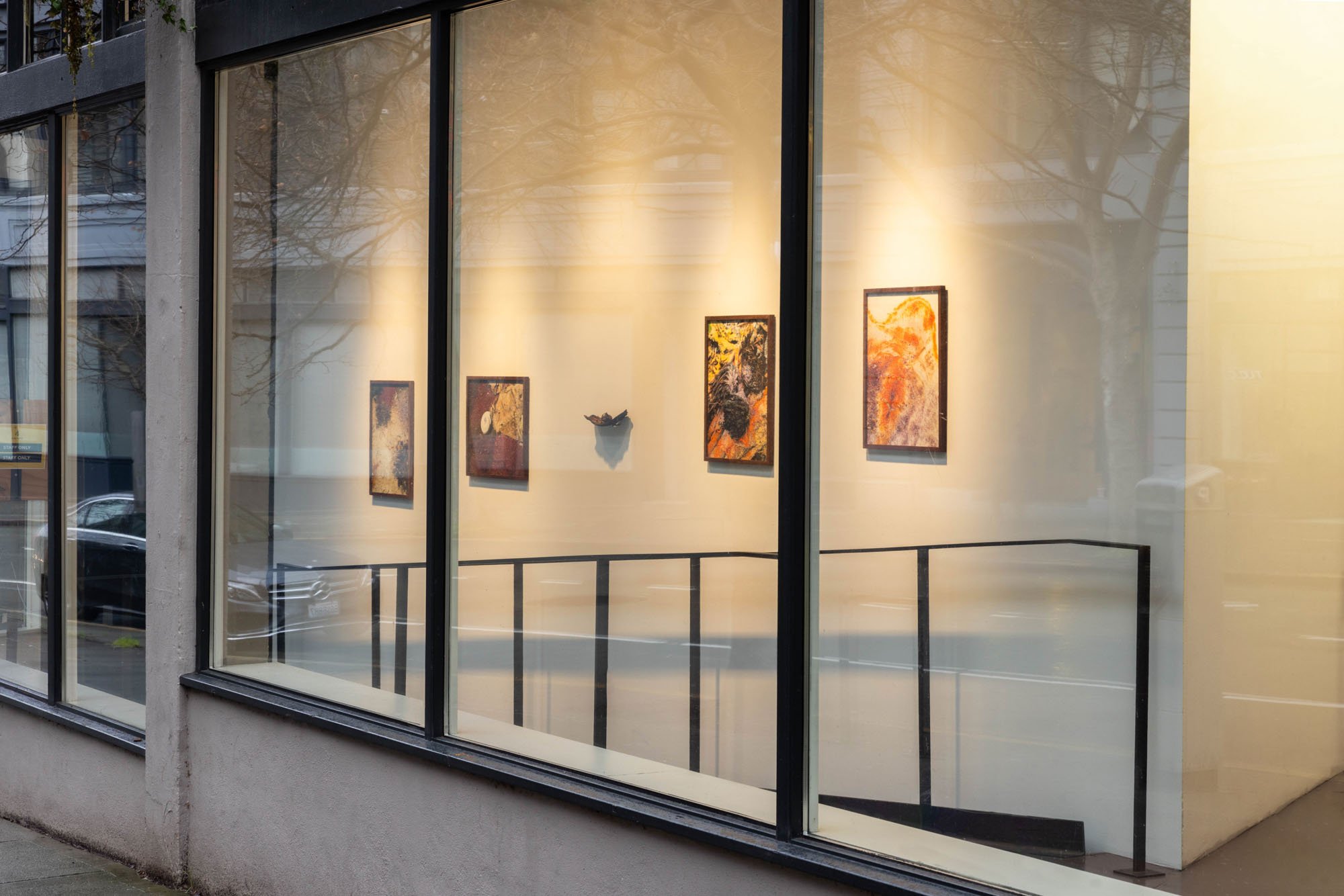Edgeless Burial
Edgeless Burial
Gallery 4Culture
Seattle, Washington
February 1st - 29th, 2024
Paying homage to Ana Mendieta’s Siluetas, in which she imprinted or traced her own body on various terrains, Colleen RJC Bratton’s ephemeral drawings find their roots in the landscapes that birthed them: the Puget Sound, the snowy Cascades, the burn scar near Bolt Creek, and a small farmstead. The geographic origin of each composition serves as a reminder of impermanence, offering subtle allusions to climate change—rising sea levels, diminishing snowpacks, rampant wildfires, and soil erosion.
In contrast to more extreme forces of weathering that dissipate Bratton’s artworks outdoors, the gallery space provided a controlled environment to witness evidence of this process. Multimedia timelapses and a biomorphic installation allowed us to immerse ourselves in transience.
Edgeless Burial also suggests a metaphorical alternative to the environmentally taxing practices of cremation and embalming. In 2019, Washington became the first state to legalize human composting, where human remains become fertile soil. In this way, death is not an end but a transformation. Our physical selves rejoin the earth, blossom with the flowers, and reach new heights as the crowns of trees.
Bratton says, “When I gave birth, I suddenly lost my fear of death. I could see my own matter had become someone else, independent of my body. My skin, a seemingly rigid confinement, had revealed itself instead to be a permeable substance. Outside of faint daily shedding, the material that stayed with me postpartum will eventually disperse, its edges fading after I die. Like the slow ache of mourning, the cells within will dull and seep into the roots of something else.”
Images courtesy of Rafael Soldi and Joe Freeman
Salt Lick, 2023, Ground clams (Littleneck, Butter, Varnish, Cockle, Macoma), Dungeness Crab shells, Sanddab, seaweed and kelp (Rainbow Leaf, Turkish Washcloth, Sea Lettuce, Red String, Sugar, Nori), ground flowers (Rose, Calendula, Marigold), Moon Snail shell, and rocks. Approx. 96 x 80 inches. Originally created at pka’dzultshu (Discovery Park Beach)
Video documentation and editing by Josh Paul True
